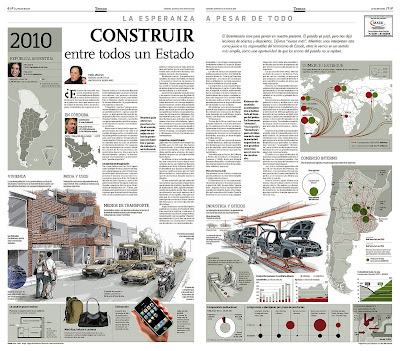lainformacion.com
 Click on image for interactive graphic
Click on image for interactive graphicFor this prediction I used some different data: points on the FIFA ranking, percentage of victories in the qualifying, experience in World Cups, individual trophies of their players... With all these numbers, I gave a numerical coefficient to each team. Then, I udes it to simulate the matches, mixing that coefficient with the results of previous matches between the teams and results of the latests matches of each national team. The first results showed how far were those results from the reality.
Prediction for the final: Spain will defeat Brazil in a very hard match
The Wall Street Journal

This graphic by Alberto Cervantes shows another simulation using the quality of the players, previous performances in World Cups, location (no European country has ever won the World Cup outside Europe)... They explain the method in this video
Prediction for the final: Brazil will defeat Spain
Wired

This maybe the most famous infographic about predictions for this World Cup. They have used such original data as GDP per capita or population added to experience or goal averages. They recognize GDP per capita is the most important value. Anyway, their predictions are running as badly as mines, if not worse...
Prediction for the final: Brazil will defeat Serbia
All of us think Brazil will make their way to final, two of us think the other team in Soccer City will be Spain. And just me believe Spain will win its first World Cup. I hope I'll be right...
Share















